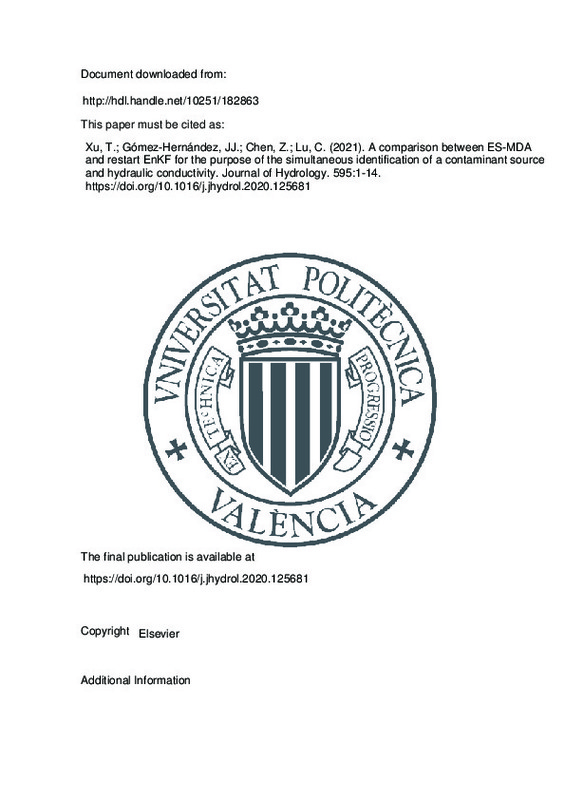JavaScript is disabled for your browser. Some features of this site may not work without it.
Buscar en RiuNet
Listar
Mi cuenta
Estadísticas
Ayuda RiuNet
Admin. UPV
A comparison between ES-MDA and restart EnKF for the purpose of the simultaneous identification of a contaminant source and hydraulic conductivity
Mostrar el registro completo del ítem
Xu, T.; Gómez-Hernández, JJ.; Chen, Z.; Lu, C. (2021). A comparison between ES-MDA and restart EnKF for the purpose of the simultaneous identification of a contaminant source and hydraulic conductivity. Journal of Hydrology. 595:1-14. https://doi.org/10.1016/j.jhydrol.2020.125681
Por favor, use este identificador para citar o enlazar este ítem: http://hdl.handle.net/10251/182863
Ficheros en el ítem
Metadatos del ítem
| Título: | A comparison between ES-MDA and restart EnKF for the purpose of the simultaneous identification of a contaminant source and hydraulic conductivity | |
| Autor: | Xu, Teng Chen, Zi Lu, Chunhui | |
| Entidad UPV: |
|
|
| Fecha difusión: |
|
|
| Resumen: |
[EN] Understanding a contaminant source may help in a better management and risk assessment of a polluted aquifer. However, contaminant source information may not be available when a pollutant is detected in a drinking ...[+]
|
|
| Palabras clave: |
|
|
| Derechos de uso: | Reconocimiento - No comercial - Sin obra derivada (by-nc-nd) | |
| Fuente: |
|
|
| DOI: |
|
|
| Editorial: |
|
|
| Versión del editor: | https://doi.org/10.1016/j.jhydrol.2020.125681 | |
| Código del Proyecto: |
...[+] |
|
| Agradecimientos: |
Financial support to carry out this work was received from the
Spanish Ministry of Economy and Competitiveness through project
CGL2014-59841-P, and from the Spanish Ministry of Education, Culture
and Sports through a ...[+]
|
|
| Tipo: |
|







![[Cerrado]](/themes/UPV/images/candado.png)


